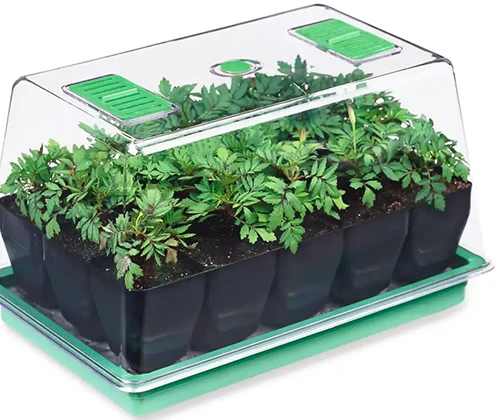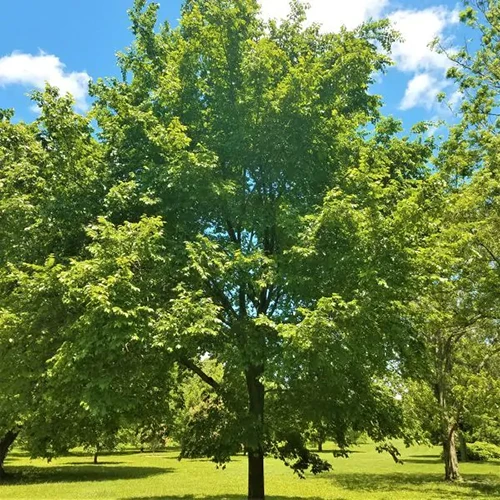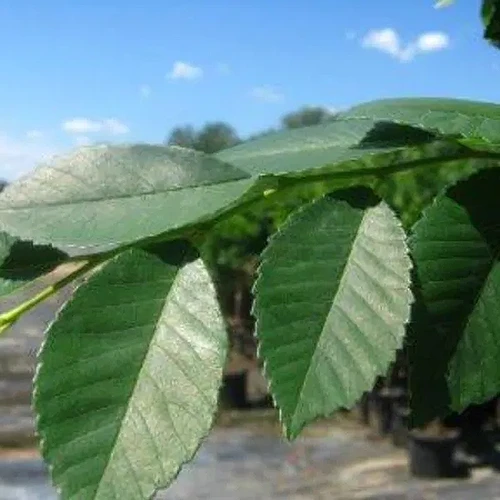Ulmus spp.
Elm trees are some of the most majestic and resilient plants in nature. Their iconic features make them stand out amongst other species as a symbol of strength and fortitude.
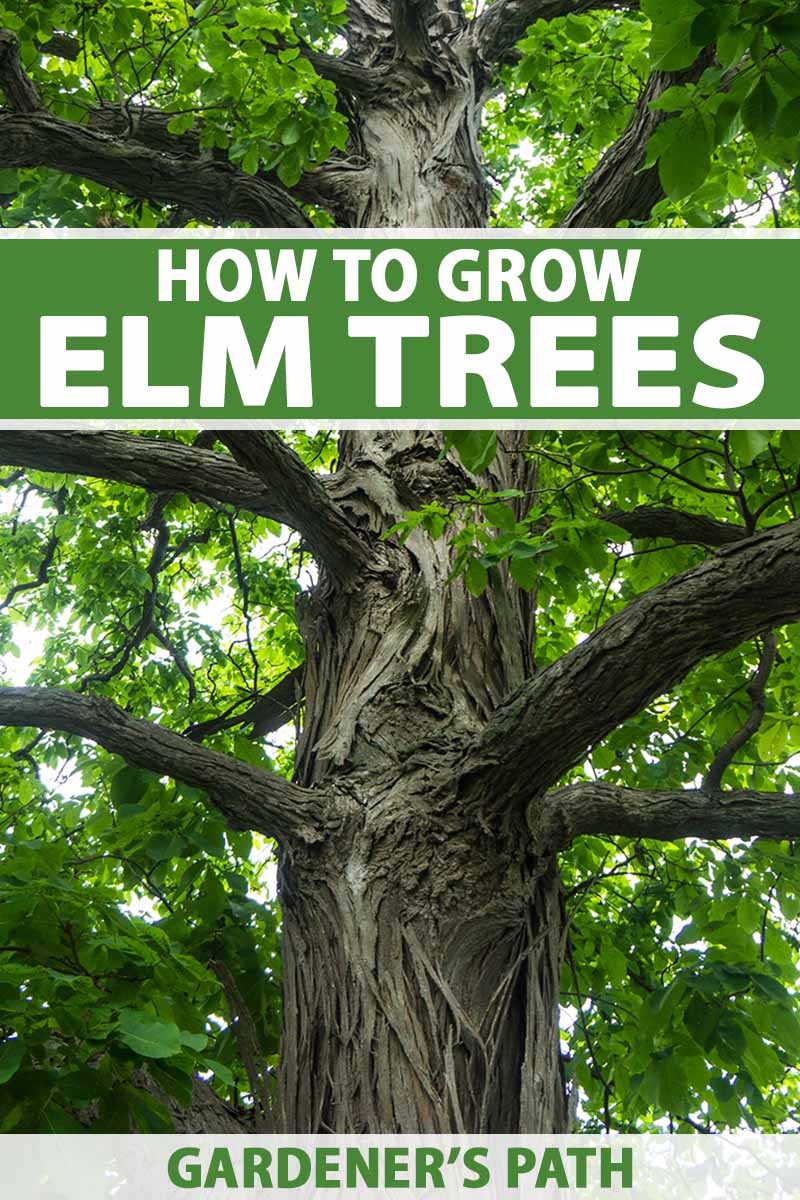
We link to vendors to help you find relevant products. If you buy from one of our links, we may earn a commission.
The elm is known for being a common tree throughout most of the US because of its ability to grow in a broad range of climates.
In fact, thanks to their reputation as strong and vigorous plantings, you can see them on display in places like the National Mall in Washington, DC and all over Central Park in New York City.
If you have ever been to a lush, green park almost anywhere in America, there is a good chance you have seen plenty of elm trees.
When I was in college, there was an open area with trees, including a bunch of elms to relax under.
I used to love it because I could sit there for two or three hours and study, eat my lunch, and listen to music on my discman – yes, I am that old – without ever having to move to stay in the shade on those warm, cloudless, southern California days.
Growing Ulmus species is a gratifying experience that will leave your landscape looking even more stunning than before, as long as you have the patience to let them grow.
So, if you want to add to the majesty of your yard or another area with a tree as glorious and dignified as the legendary elm, read on, and I will share my tips and tricks for getting the best results in growing these remarkable specimens.
What You’ll Learn
What Is an Elm Tree?
An elm tree is a deciduous or semi-deciduous tree that belongs to the Ulmaceae family and the genus Ulmus.
The leaves are double-toothed and are often asymmetrical at the base. They turn a dull yellow in fall.
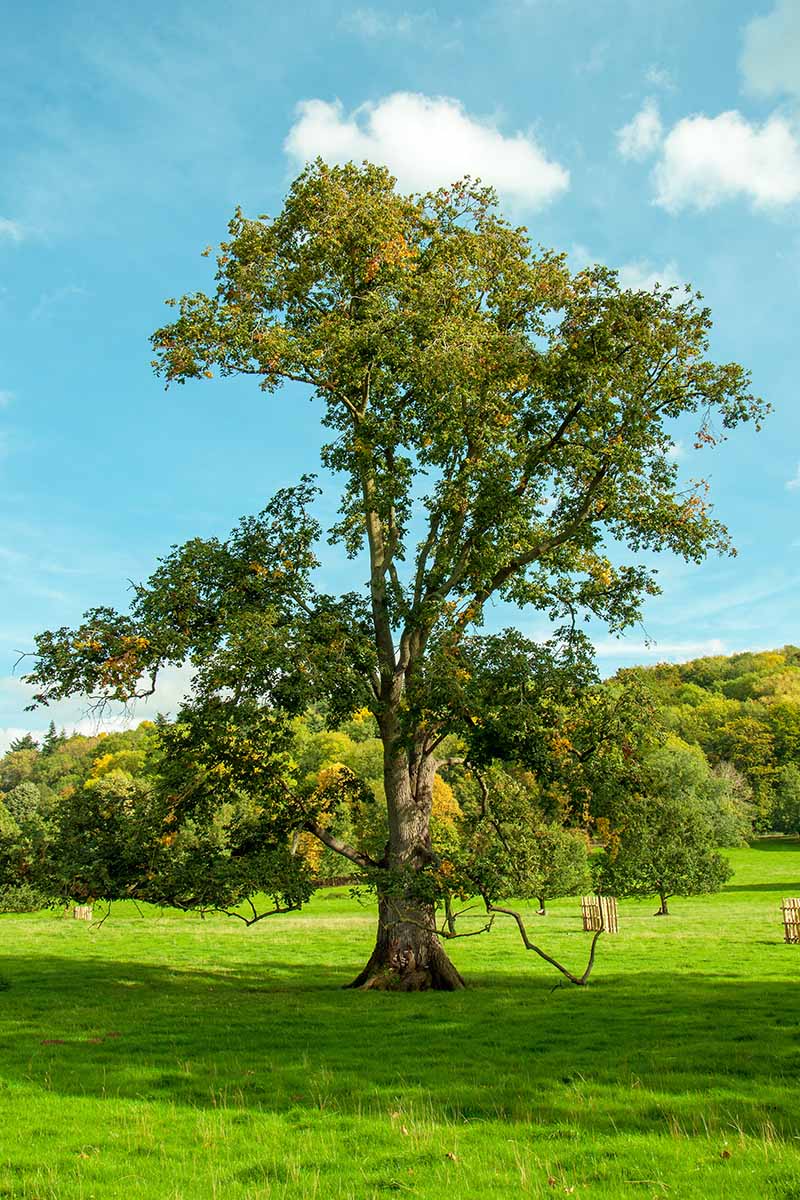
The tiny, inconspicuous flowers, which don’t have petals, come out before the leaves and grow in clusters on jointed stems.
The nut-like fruits or samaras are surrounded by a flat, sometimes hairy casing that looks like wings.
The bark tends to be dark gray with flat ridges that appear as if they were braided. Stems are smooth and brown.
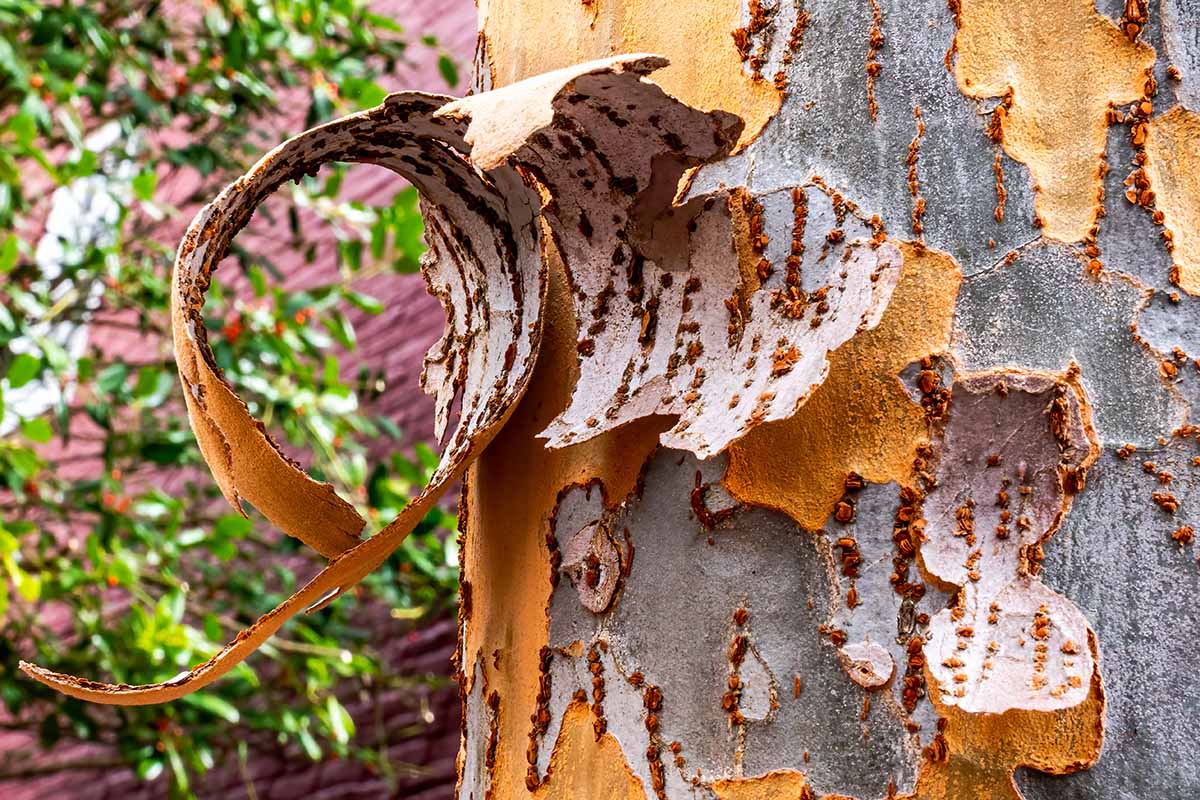
Because of its hardiness, Ulmus species can be found around the world, with some varieties being more common than others. For this reason, we are going to stick to the basics with the more common types here.
You may want to also reconsider putting them too close to a house or sidewalk. They have been known to do some damage as they just keep growing and growing and growing!
Also, soil moisture should be closely monitored as they prefer well-drained soils with consistent water levels throughout the year.
With proper care and attention provided by your loving hands, elms can bring great beauty and longevity to gardens.
Cultivation and History
Elm trees have been cultivated for centuries and are known for their impressive beauty.
They’re popularly used in landscaping because they give so much shade with their large leaves, making them highly sought after on warm summer days.
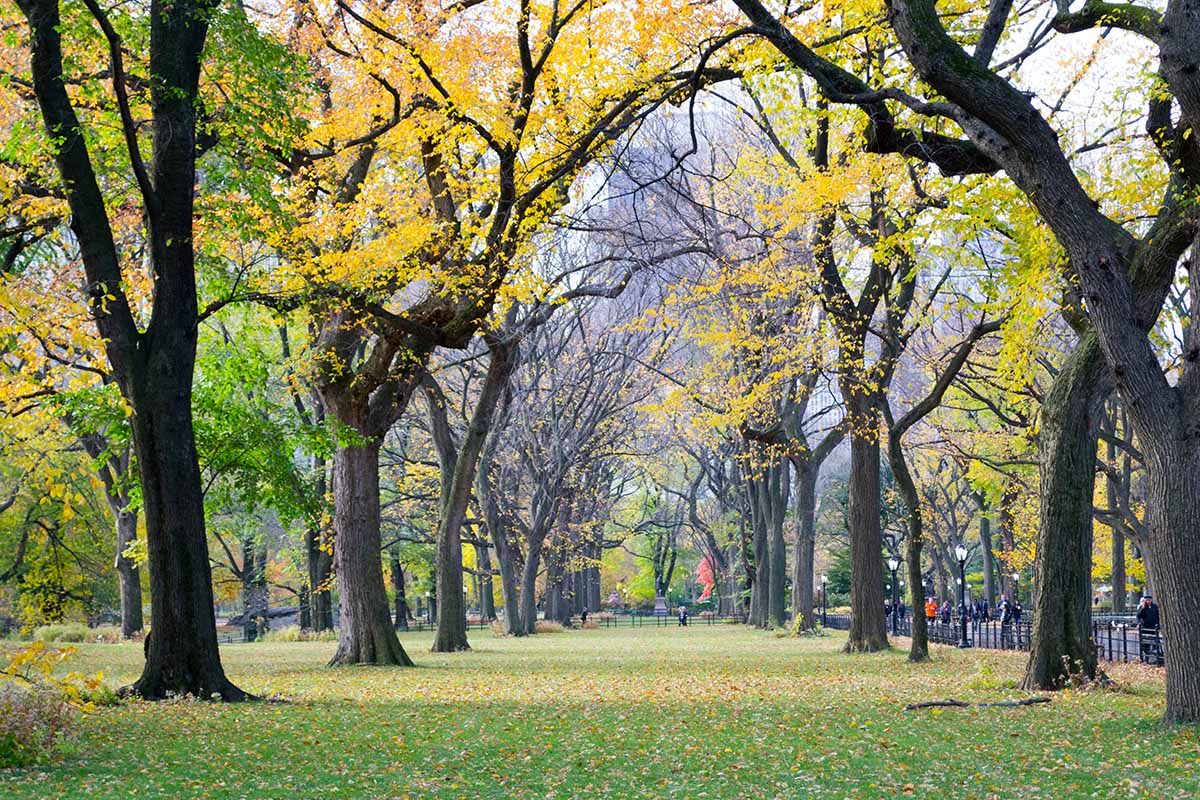
One cool thing about elms is they also boast noteworthy medicinal uses – the bark of the slippery elm (U. rubra) has long been used to treat various ailments like fever and headaches, as well as gastrointestinal upset.
In many cultures worldwide, Ulmus species are seen as symbols of strength and longevity because they grow so quickly and last a very long time when well cared for.
The wood is popular for making furniture, and ironically enough, the handles of axes people use to…
… chop down other elm trees.
The versatility makes them great additions to any outdoor area.
In addition, controlled breeding programs all over North America have led to the creation of hybrid Asian elms.
All of these hybrid varieties have shown resistance to Dutch elm disease and are great choices for places where other trees won’t grow.
In general, these hybrids are smaller than their American relatives.
Propagation
Elms may be cultivated using various methods, including sowing seed, rooting cuttings, transplanting nursery saplings, and grafting. We’ll briefly cover all but the latter method here.
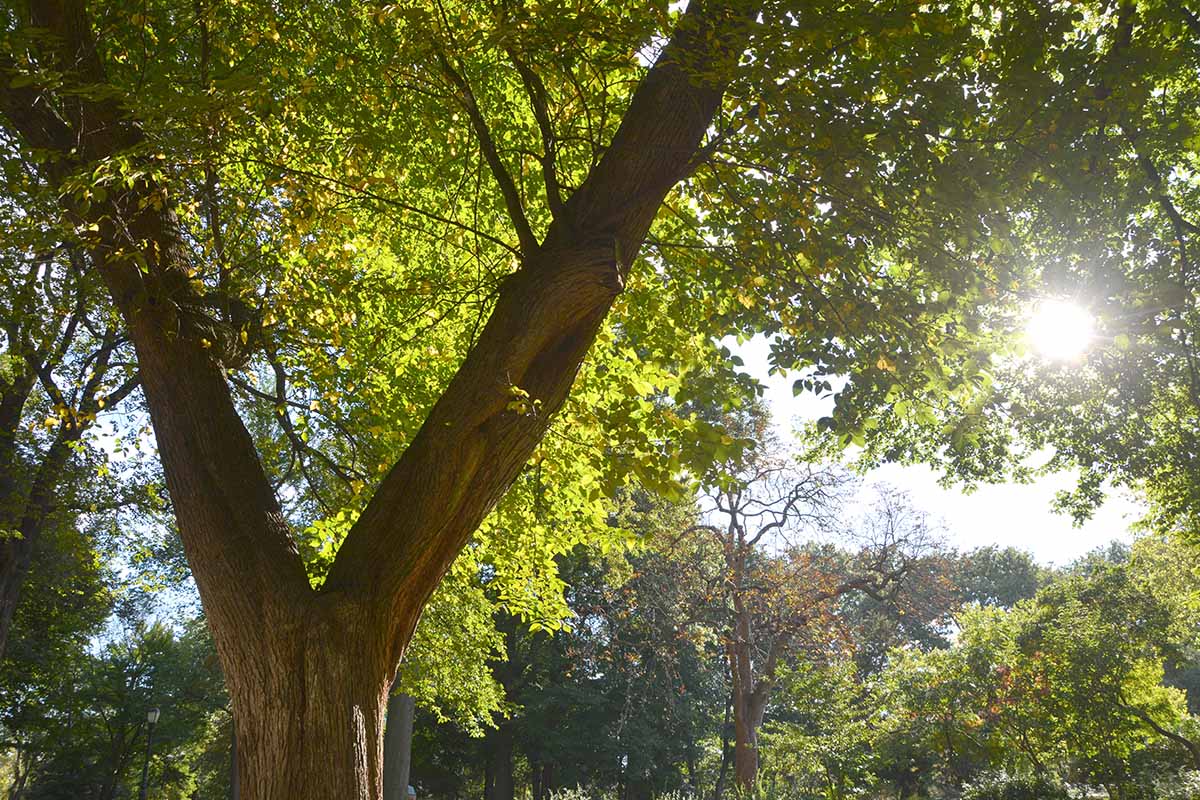
Giving these large, long-lived plants a healthy start is crucial. If done incorrectly, issues such as root rot may become problematic.
From Seed
Usually, you can collect the seeds (known as samaras) from the ground when they fall.
The seed is “winged” so it can travel as it glides through the air. These drop in mid-March in the southern US and in June in the north.
One of the great things about elm seeds is that you don’t really need to do much to them before planting. You can just let them dry out for a few days, then toss them back onto the ground and let them go!
Cover the seeds by a quarter-inch to half an inch with grit or compost, and tamp down firmly.
While they are simple to get going, you should ensure the ground stays wet for the first few days until they germinate, watering moderately every day or every other day.
In full sun with moist, fertile soil, you can expect to see young seedlings in as little as a few weeks after sowing.
The best temperatures for germination in late spring or early summer are 68°F at night and 86°F during the day.
But germination is nearly as good when temperatures range from 50 to 70°F. They can manage almost any moisture level, but extensive flooding can kill the seed off.
Some gardeners like to grow them in a pot for the first year or so before transplanting, so the seedlings won’t be damaged like little helpless babies. Be sure to provide the necessary care!
From Cuttings
Take cuttings from the point where two healthy branches of a mature specimen meet. Put the cuttings in water right away to keep them alive.
You want to take softwood cuttings, harvested in the spring when the new shoots are about three inches long. Cut at a 45-degree angle for best results.
Put a little rooting hormone on the cut end and put each cutting in its own pot filled with rich potting soil, or ideally a rooting cube. These are specifically designed for propagating cuttings, and often made of peat moss.
My personal favorite is made by Root Riot. They are made of composted organic materials, are ready to use, and are even pre-moistened!

Packs of 50 or 100 are available from Amazon.
If you use rooting cubes, place them in flats with a clear plastic dome on top to keep the humidity high.
You might like this starter set with deep planting cells, a solid base tray, and a humidity dome, available from Gardener’s Supply.
Bright, indirect sun exposure is good, but you don’t want the flat to be in direct sun all day, or it might get too hot inside.
Flats or pots can also be placed about 12 inches below fluorescent or LED grow lights. Keep an eye on the soil moisture to make sure it doesn’t dry out.
In three weeks, check to see if any of the cuttings have started to grow roots.
Give the cutting a gentle pull upwards. If you feel resistance, it has likely taken root. If the cutting just falls out, it might need more time to start growing roots.
If it has wilted, it is likely dead or dying, and it probably won’t grow roots.
Transplanting
Elms transplant and become established fairly easily. Ideally, plant in rich soil with a pH of 5.8 to 8.0 in a location with full sun.
Transplant in late fall after leaf drop or in early spring to minimize the risk of shock. You will want to dig a hole that’s slightly more shallow than the root ball, so the crown sits slightly above ground level.
Water deeply on a regular basis until trees are well established.
How to Grow Elm Trees
Growing an elm tree takes patience, but seeing the full-grown tree years later is worth it.
As the saying goes, the best time to plant a tree was 20 years ago, so you are in for a wait. Ulmus species grow quickly in comparison to some trees, but they still take awhile to reach their mature height and spread.
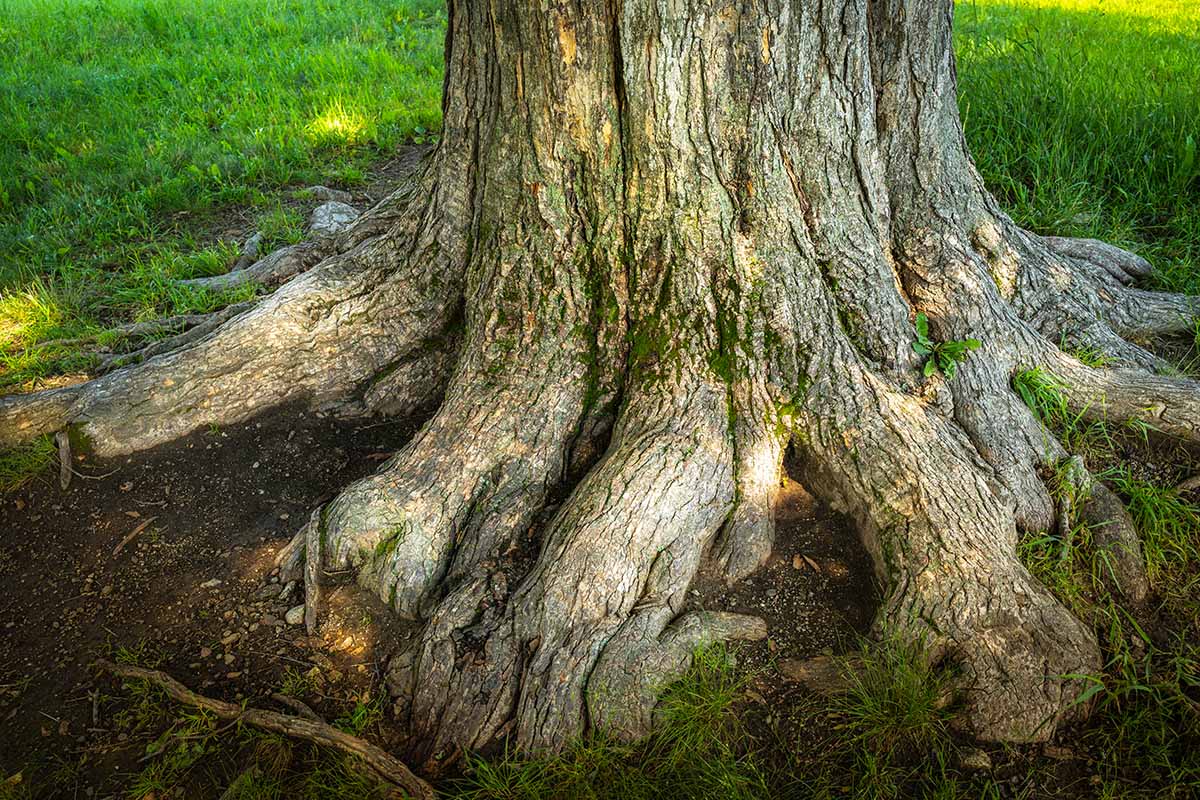
Soil preparation is key to ensuring healthy, thriving trees. Before planting, make sure the soil is loose enough to easily absorb water and provide adequate drainage.
Choose a slow-release, granular fertilizer intended for use on trees, and with a nutrient blend such as 6-12-12 or 5-10-10 NPK.
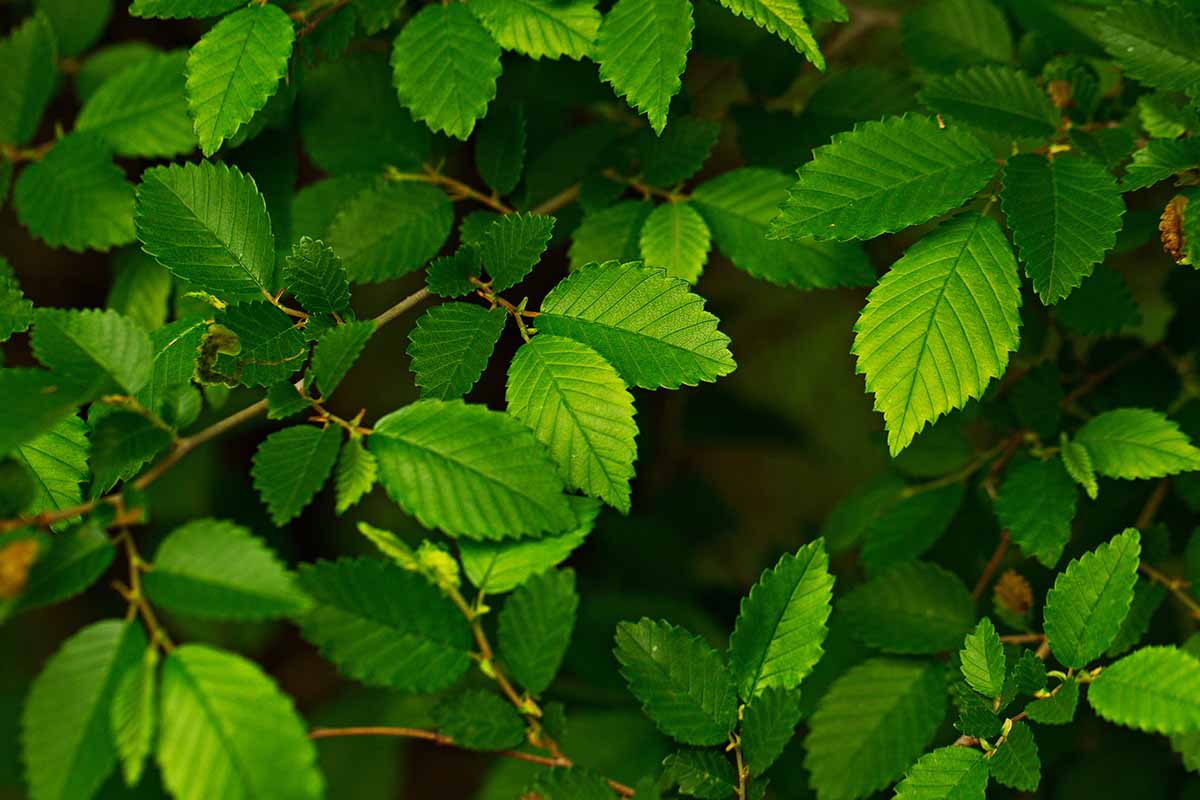
These provide less nitrogen than phosphorus or potassium, so the trees won’t grow too quickly and become more susceptible to Dutch elm disease.
This type of fertilizer offers consistent nutrition over a longer period than liquid formulas.
A great option is BioAdvanced 12-Month Tree and Shrub Protect and Feed which is a slow-release fertilizer that only needs to be provided once a year in the fall.

BioAdvanced Tree and Shrub Protect and Feed
It’s available on Amazon in 10-pound packages.
You will want to fertilize the entire area under the canopy and extending six feet out. Apply fertilizer in the early spring when you start to see new growth emerging.
When caring for an elm tree, it’s important to pay attention to its physical appearance throughout the seasons.
Leaves turning yellow or droopy branches can indicate stress from insufficient nutrients, or too much/too little water, both of which need tending to quickly if you want your tree to thrive!
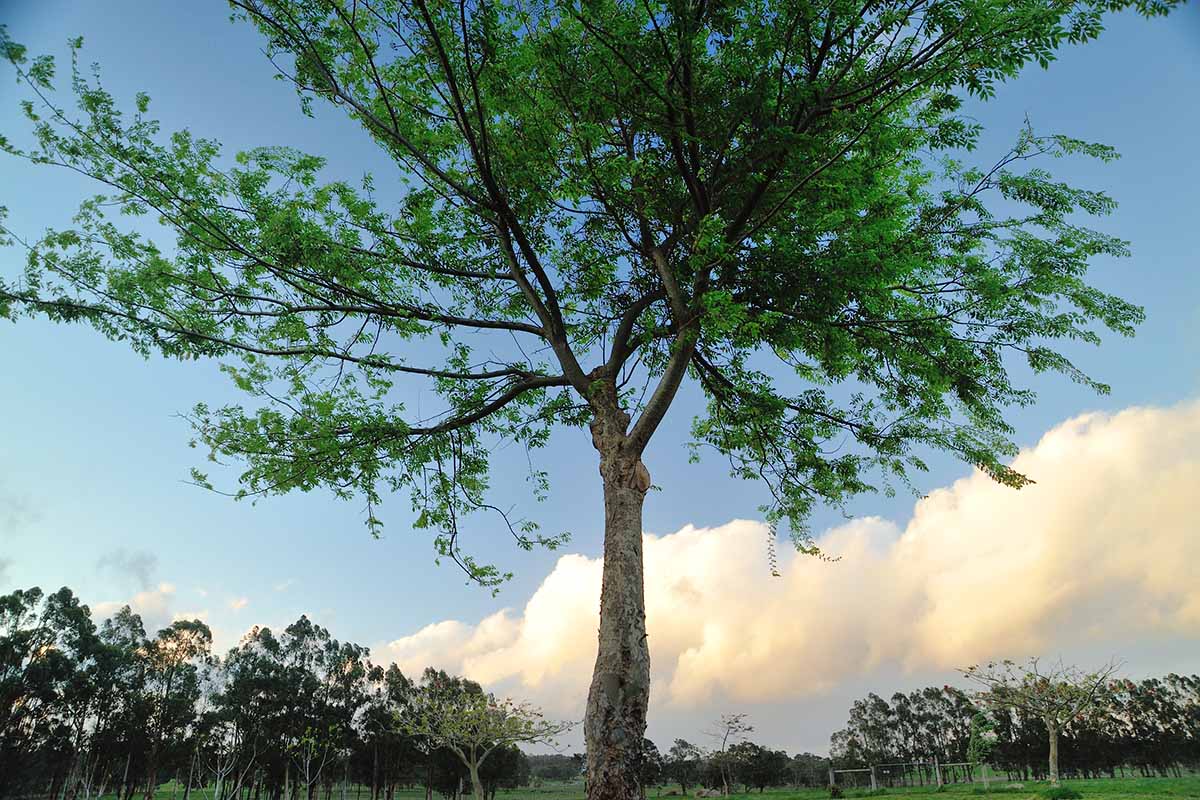
Careful watering schedules are essential. Without proper hydration, the chances of successful growth decrease drastically.
Watering should happen regularly and deeply during dry periods – especially in the summer. If the soil is dry several inches down, you should water. But established specimens can go a month or longer without watering and still stay healthy.
Mulching around the base of your tree helps to retain moisture and protects against weeds.
With these simple steps, you’ll be able to provide all that’s necessary for strong, healthy growth – just remember, patience goes hand in hand with gardening success!
Growing Tips
- Keep specimens well-watered the first year or two. Hearty once mature, they can be damaged much more easily while young.
- Plant away from structures, in an area with full sun.
- Provide well-draining soil with a pH of 5.8 to 8.0.
Pruning and Maintenance
Proper pruning and maintenance is essential to ensure health and longevity.
While some might think pruning is unnecessary due to their slow growth rate, promoting a strong branch structure in young specimens can be beneficial.

You will want to try to do most of your pruning during the height of dormancy in January to minimize shock to the tree.
Proper pruning should involve removing dead or damaged limbs and thinning out dense branch patches so air can circulate freely through the canopy.
Also, shortening overly long branches by cutting them back several inches below where they naturally break off will help create a much nicer shape in mature trees.
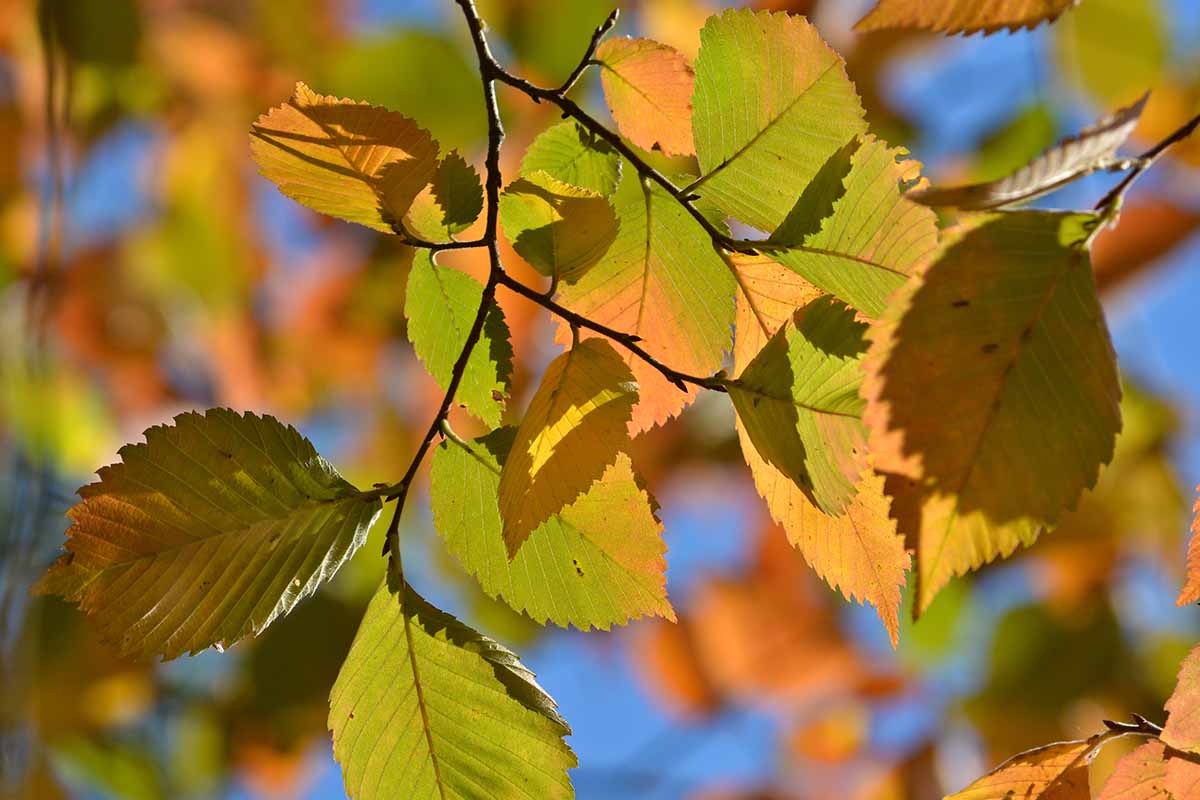
For larger branches over an inch and a half in diameter, use a three-step approach when making your cuts:
- Make a notch cut into the underside of the branch about 12 inches away from the trunk.
- Saw halfway into the branch until its weight causes it to break off.
- Make a final downward slanted cut flush with the remaining stub.
This technique will prevent bark damage while minimizing sap loss associated with large pruning cuts.
You should also keep in mind that improper pruning can lead to disease or the death of your tree, while following these guidelines carefully will help you to benefit your trees with less risk of injury or harm.
With dedication and care, your elm tree will live a long life, providing beauty and shade for generations to come.
Species and Cultivars to Select
Selecting suitable cultivars for your area is an integral part of successful growth and maintenance.
When you have so many different types to choose from, it can be overwhelming to try to decide which one will best suit your needs.
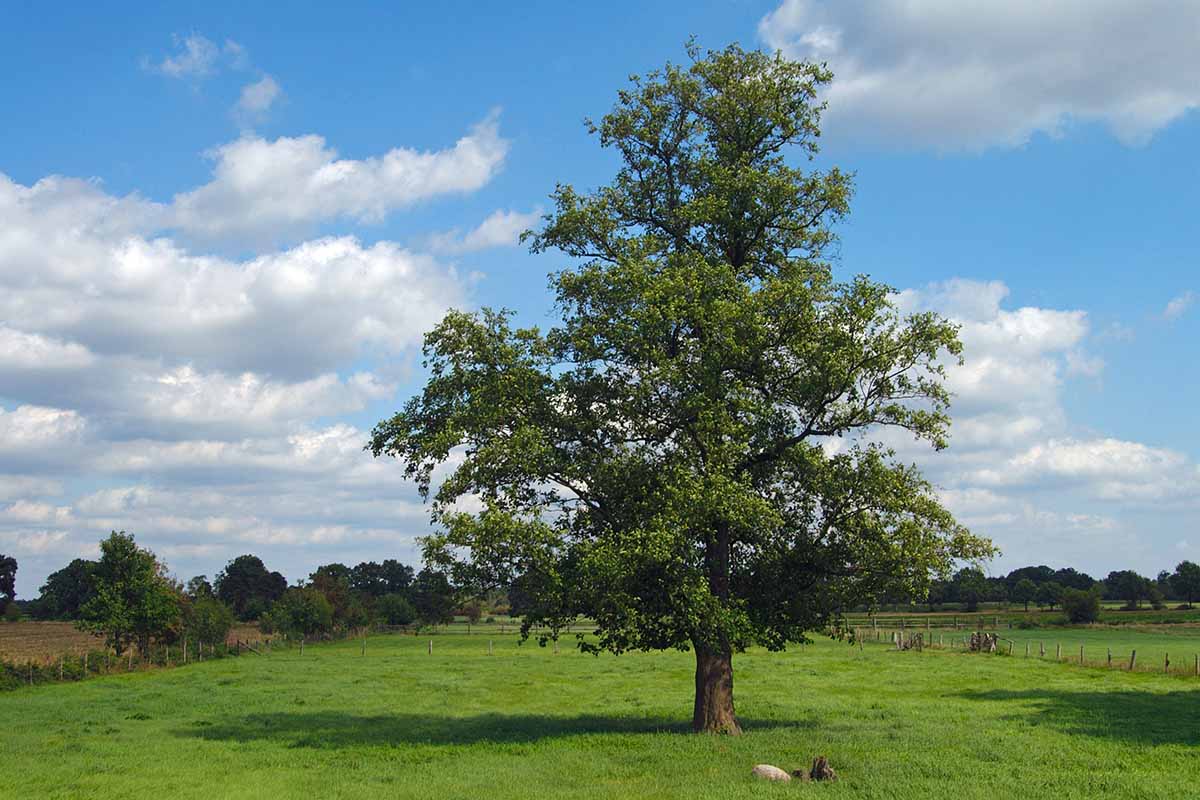
But with some careful consideration and knowledge about grafting techniques, soil preparation, and climate considerations, you can make the right choice for your environment.
When selecting a variety, start by considering what space you have available and how much sunlight or shade that area receives throughout the day.
Then think about the type of soil in your yard and whether additional fertilizers or amendments may be needed to support healthy growth. Knowing this information ahead of time helps narrow down potential options.
Climate conditions should also play a major role in deciding on a species or cultivar. Temperature fluctuations, annual rainfall patterns, even wind exposure – all should meet certain criteria before planting begins to ensure success.
It’s always important to double-check USDA Hardiness Zones before deciding which variety to choose for yourself, but here are a few to consider:
American
Since most of our readers are Americans, many will want to choose the American elm (U. americana). This variety will grow all over eastern North America and is drought tolerant.
U. americana can grow to 130 feet tall and 60 to 120 feet wide.
This species is a favorite for those who want a strong, low-maintenance tree. You can purchase one from Nature Hills Nursery.
Chinese
The Chinese species (U. parvifolia) does well in western states like California.
The ‘Drake’ cultivar of this species can be purchased through Nature Hills Nursery.
With a rounded shape and arching branches, this cultivar is evergeen in the south, with leaves that turn shades of yellow, red, or purple in northern Zones.
Cedar
The cedar elm (U. crassifolia) is popular in the south, especially in Texas.
One thing people love about U. crassifolia is how easily it grows in cities, because it is more resistant to pollution than many other trees.
Camperdown
Finally, another popular variety is the camperdown (U. glabra ‘Camperdownii’), a cultivar of the wych or Scots elm, which grows well in the UK and is fairly popular all over the region.
This variety also thrives in USDA Hardiness Zones 5 through 7.
‘Camperdownii’ trees are available from Nature Hills.
Slippery
The slippery elm (U. rubra) is a deciduous tree native to central and southern US. The inner bark of this species is red, and is harvested for its use in herbal medicine.
These trees are highly susceptible to Dutch elm disease and are rarely available from nurseries.
If you want to learn more about slippery elm, check out our guide. (coming soon!)
Managing Pests and Disease
While many elm trees are known for their heartiness, they are not immune to the forces of nature, so you should try your best to take care of them.
Not watering properly, insects, and disease can destroy your beloved specimen faster than you realize.
First, it’s essential to identify any pests or pathogens that may be present.
Properly identifying pests as well as signs of bacterial or fungal infection, understanding their life cycles and times of year when they are the most prevalent, and taking the appropriate control measures is crucial.
Prevention is also vital – use appropriate treatments, such as insecticides, at the right time of year.
With the proper knowledge and techniques, you can help reduce the impact of pests and diseases on your trees.
Vertebrates
The elm doesn’t have much to worry about when it comes to damage from animals. That said, opossums, mice, and squirrels often eat the seeds.
Squirrels may pose a potential threat to elms, feeding on new growth at the branch tips.
Also, sapsucker woodpeckers have a great love of young specimens. They can cause permanent damage to the trunks and can be particularly harmful to smaller, young elms.
Insects
Elm trees are seriously threatened by one type of invasive pest: the bark beetle (Hylurgopinus rufipes). But several different species of beetles may also feed on the leaves.
In both its adult and larval stages, the elm leaf beetle (Xanthogaleruca luteola), which originated in Europe, feeds mainly on leaves. Even massive, mature trees are susceptible to total defoliation. These pests can also spread the fungi responsible for Dutch elm disease.
The Japanese beetle (Popillia japonica) is another foreigner that is a particular threat to elms.
In both cases, the beetles do a lot more damage in North America than in their native lands because there are no common predators as there are where they originally came from.
Systemic insecticides that can be put on the soil and then move through the trunk to the leaves where beetles feed are the best option to eliminate these pests.
Imidacloprid is the most common insecticide used for this purpose.
Compare-N-Save Systemic Tree and Shrub Insect Drench is an excellent option that is absorbed through the roots and attacks the beetles as they feed.

Systemic Tree and Shrub Insect Drench
It’s available on Amazon in gallon-size bottles of concentrate.
Disease
Dutch elm disease (DED), which is caused by the fungi Ophiostoma ulmi and O. novo-ulmi, is thought to be one of the worst diseases that can strike trees.
Infected specimens will initially wilt before eventually dying out.
The disease clogs the elm’s xylem or water-conducting system.
Thankfully, modern advances in cross-breeding have created more DED-resistant cultivars, but rarely is a tree entirely immune to the damage it can cause.
Elm bark beetles spread the DED fungus when they’re feeding, making it particularly difficult to fight off insect and disease threats simultaneously.
In addition, elm yellows is a disease that affects these trees, caused by bacterial phytoplasmas in a number of different groups. It is spread by leafhoppers or by grafting rootstock onto the trees.
Also called elm phloem necrosis, this is a disease that spreads quickly and has no known cure. This disease is commonly known to occur in the eastern half of the United States and in the southern part of Ontario, Canada.
Best Uses for Elm Tres
One outstanding characteristic of the elm is its versatility.
Besides its usefulness in woodworking and carpentry products, it’s a favorite tree for ornamental horticulture that’s often used in landscaping to provide shade and aesthetic appeal.
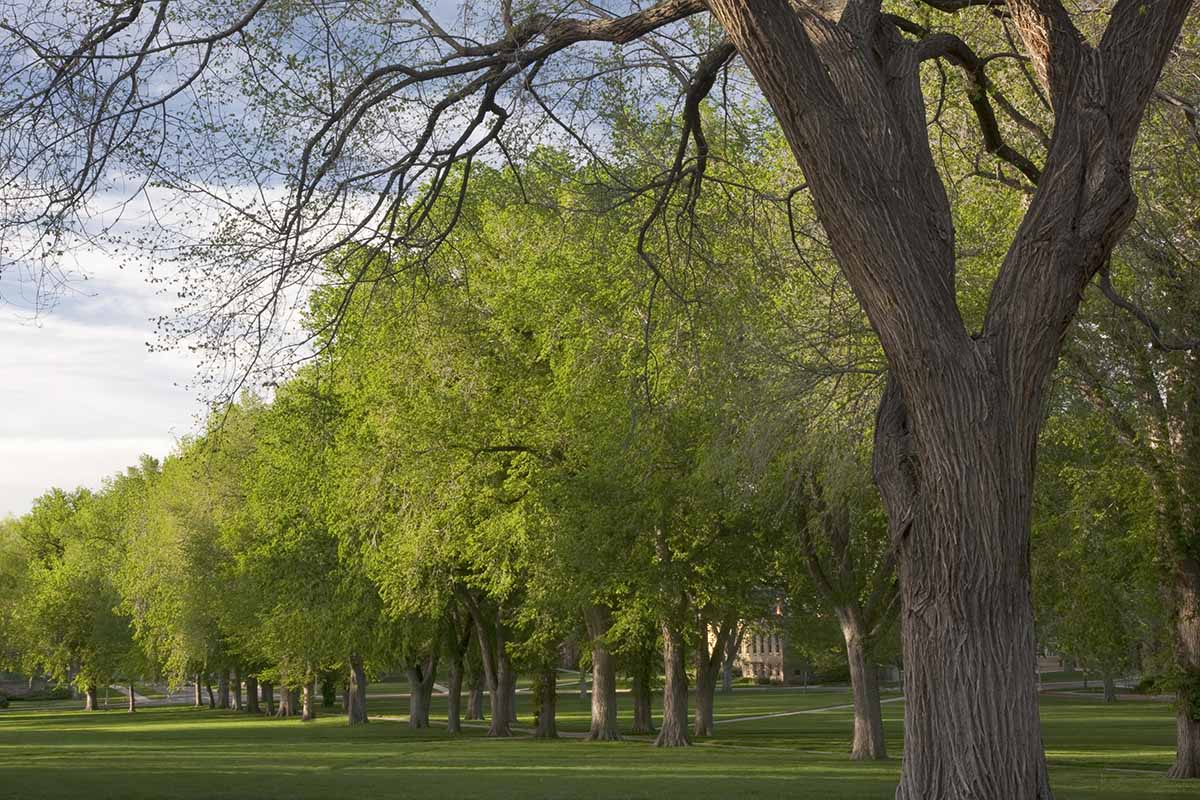
Many elm varieties are drought- and pollution-tolerant, making them ideal for lining streets and medians.
And many types are grown in wildlife preserves to support a broad range of birds and other wildlife.
Also, elms are excellent for creating windbreaks in a yard to protect other plants and structures like buildings with windows in high-wind areas.
Quick Reference Growing Guide
| Plant Type: | Deciduous and semi-deciduous trees | Flower/Foliage Color: | Various (inconspicuous); medium green, chartreuse (golden, yellow leaves in fall) |
| Native to: | Africa, Asia, North America, depending on species | Maintenance: | Moderate |
| Hardiness (USDA Zones): | 4-9, (sometimes 3, depending on species) | Tolerance: | Drought, pollution |
| Bloom Time/Season: | Late winter-early spring (blooms/samaras), fall (color) | Soil Type: | Rich, loamy |
| Exposure: | Full sun | Soil pH: | 5.8-8.0 |
| Time to Maturity: | 20-30 years | Soil Drainage: | Well-draining |
| Spacing: | 60-70 feet | Companion Planting: | Hosta, lily turf, periwinkle, Virginia bluebell |
| Planting Depth: | 1/4-3/4 inch (seed), slightly more shallow than root ball (transplants) | Avoid Planting With: | Plants that need full sun |
| Height: | 30-70 feet | Uses: | Shade, woodworking |
| Spread: | 30-60 feet | Order: | Rosales |
| Growth Rate: | 3-6 feet per year until maturity | Family: | Ulmaceae |
| Water Needs: | Moderate | Genus: | Ulmus |
| Common Pests and Diseases: | Beetles, carpenter worms, cankerworms, flea weevils, leafhoppers, sawflies, scale; black leaf spot, Botryodiplodia canker, Dutch elm disease, elm yellows, leaf scorch, root rot, wetwood | Species: | Americana, crassifolia, glabra, parvifolia, rubra, villosa |
Nobody Has Nightmares on Elm Streets
Growing elms can be a rewarding experience for any tree lover, as they provide shade and beauty to any landscape. These majestic trees can bring life to an area with the right conditions and care.
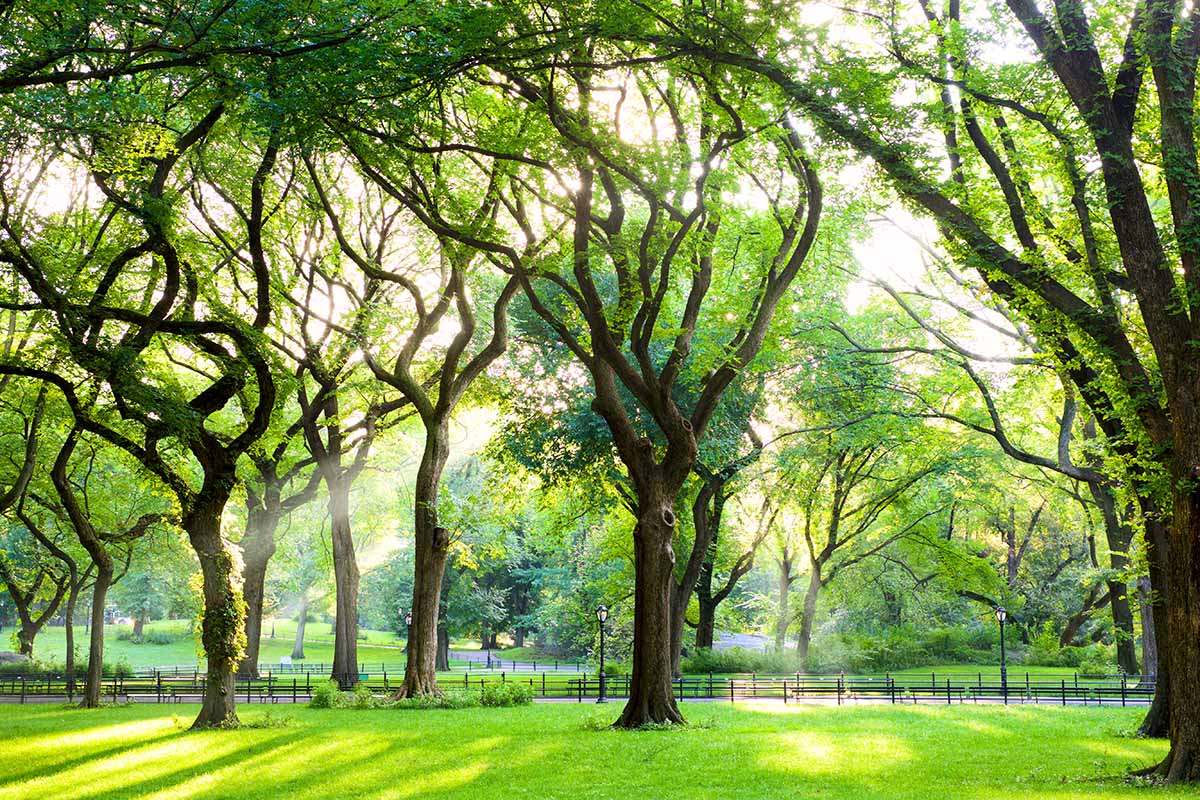
A healthy elm can live for up to 300 years! That’s why taking good care of yours from the start is important.
By following our guidelines to plant and grow them correctly, you can enjoy their benefits for many generations.
Find out what others have to say about their favorite elm in the comments, or better yet, leave one of your own!
Looking for something a little different? Check out these guides to growing landscape trees next:
